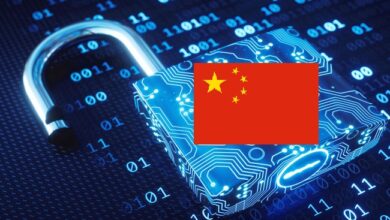BlockchainCryptocurrencyTechnology Law / Cyber Law
Mushrooming Non-Fungible Tokens

Introduction
Non-Fungible Tokens (NFTs) are big news right now. In the American art and entertainment industry every other week someone is announcing the sale of these NFTs. But it’s still a question to the masses as to what NFTs are, as they can’t seem to wrap their minds around the process of buying and selling NFTs. NFTs are digital files with a unique identifier that is verified on a blockchain and are not replicable or interchangeable. They can represent an original work to be sold or several copies in a limited series. In simple words, they are tokens that are used to represent ownership of unique items. They hold collectible and ownership value by the crypto-audience.
Their defining nature is that they can be used to represent ownership of any unique asset ranging from digital art and music to deed for an item in the digital or physical realm. They are a special class of assets on the blockchain characterized by being unique and non-interchangeable with one another for equal value. An NFT is different from a cryptocurrency in a manner that it is defined by metadata that builds in a role, function, and value that are unique to it.[i]
How do NFTs work?
Most Non Fungible Tokens are part of the Ethereum blockchain. Ethereum happens to be a cryptocurrency similar to bitcoin. But while a bitcoin is fungible, which means that it trades one for another bitcoin, NFTs are non-fungible which means that something is unique and cannot be replaced with something else. It’s like a one-of-a-kind trading card and hence is non-fungible. If you traded it for a different card, you would have something completely different.
NFTs mostly live on Ethereum, and hence can be bought and sold on any Ethereum based market. So in order to buy and sell NFTs, you can install Metamask, which is a digital wallet for Ethereum. Metamask allows you to display and transfer your NFT tokens directly. After installing Metamask, one can buy Ethereum, and now whenever one visits any website that sells NFTs one can use the purchased Ethereum to buy an NFT. Since each token has a unique identifier and this information is easily verifiable, one can always prove their ownership.
NFTs also give power to creators over their work on the internet. A lot of times content creators see their profits and earning potential swallowed by platforms. NFTs power a new creator economy where creators don’t hand over the ownership of their content to the platforms which they use to publicize it. When they sell their content, funds go directly to them. If the new owner then sells the NFT, the original creator can even automatically receive royalties. This is guaranteed every time it’s sold because the creator’s address is part of the token’s metadata that can’t be modified.
Proof of Work vs Proof of Stake
Ethereum, the platform used for generating NFTs works on the Proof of Work model. The Proof of Work model of a blockchain is used to determine that a consensus is reached.[ii] In simple terms it is used to determine the validity of the transaction being made without the presence of a centralized third party. Proof of Work cross-checks that there is no “double spending” of money. In the Proof of Work model, miners are given complex puzzles to solve, but easy to verify. If in a given situation six miners are given a puzzle and one of them solves the puzzle the rest five miners can verify that the solution is correct and in this way, there is proof that the person who has solved the puzzle has worked and is verified by the remaining miners.
Proof of Work is necessary for adding new blocks to the blockchain. Only a single correct Proof of Work could be there i.e. a random string of letters and numbers, so miners make millions of calculations in a span of a second. For these complex calculations, miners use expensive specialized computers.[iii] Each correct guess will earn the miner a bitcoin (and add a new block to the blockchain). Due to the absence of a centralized entity like a bank or any other financial institution which keeps a check on everyone’s holdings, the cryptocurrency has to rely on Proof of work to cross-check for double-spending.
One of the major setbacks of the Proof of Work model is the large energy that it consumes. The complex puzzle needs complex mathematical computation which is done by very efficient computers using complex algorithms and hence it requires a large amount of energy. Ethereum’s estimated annual energy consumption[iv] is more than 30 Terawatt hours which is at par with the energy consumption of Ireland.[v] Apart from the energy consumption the carbon footprint is approximately 15 million metric tons of carbon dioxide which is almost three times Seattle’s yearly emissions.[vi] The purpose of NFT’s cannot justify the amount of energy consumed and the carbon footprint. For something that does not have a tangible existence and has no importance outside the digital realm,[vii] the process is pretty inefficient and the purpose is futile. The living conditions are already deteriorating globally and a virtual currency that generates greenhouse gases equivalent to the amount of a country would be certain that we want to avoid.
Another disadvantage of the Proof of Work model is the creation of ‘Mining pools’. Organizations around the globe have bought many devices which generate high mining powers.[viii] This allows people to pool their resources which increases their chances of solving the puzzle and getting the cryptocurrency. This way ordinary people stand no chance of solving the puzzle. Currently, there are 4 mining pools that control more than 50% of mining power.[ix]
After weighing the pros and cons it can be concluded that the Proof of Work model is not perfect and now is the time to switch to a new model with less environmental costs. Proof of Stake model is an upgrade over the Proof of Work model. The Proof of Stake model works on the amount of cryptocurrency a person has. A person can validate or block a transaction depending upon the amount of cryptocurrency they hold. More cryptocurrency results in more mining power. In the Proof of Stake model, there’s no need to solve highly complex puzzles which save a large amount of energy from being consumed.
India’s stand on NFTs and Cryptocurrencies
There are some recent debates going on around the future of cryptocurrency in India. In the last week of March 2021, the Government made it mandatory for companies to disclose investments made in cryptocurrencies. This move was welcomed by the crypto sector operating in the country since this will bring in transparency and comfort for Indian companies which are dealing in crypto-assets and were earlier confused on how to put it in their balance sheets. So even though cryptocurrency is still not fully backed by law the ongoing discussions regarding them in the media, Parliament, etc. seem to build sentiments in their favour.
In India, NFT is a fairly new concept and experts believe that it might take some time for this trend to get popular. ZebPay which is India’s oldest and most widely used crypto-asset exchange became India’s first Non-Fungible crypto token and marketplace. They named their NFT ‘$ZEBRA’. Also recently WazirX, which is another crypto asset exchange, launched a marketplace for NFTs. Their platform will not charge customers for creating and listing NFTs, except for a fee that is used against the computer power used to verify the transactions. They also stated that they are working towards nullifying this cost to make using NFT cost-effective for creators and users.
India has lakhs of traditional artisans who could benefit from using NFTs to verify their original work. Add to that the growing number of artists working in digital media who can protect their creations with a tokenized ‘wrapper’ to show that it’s an original work.
Mr Rahul Pagidipati, CEO, ZebPay
Other Issues related to NFTs
With all the buzz around NFTs and the excitement in digital art collectors around the globe, it also opens a huge Pandora’s Box of questions. The struggle to define the value, ownership, reproduction, originality, and process of the same are as hot as NFTs themselves. Since purchasing an NFT would only get the buyer a digital receipt and it would not stop anyone from creating a copy of the said NFT. The creation and sale of virtual entities that have no tangible existence seem pointless considering many NFTs have been sold for millions of dollars. NFTs raises questions about rights other than rights of tangible acquisition.
Another important issue is to differentiate between the ownership of an NFT as a unique token and the ownership of the metadata and the content of the NFT.[x] Buying an NFT does not necessarily come with all the IP rights associated with it. Section 106[xi] of the US Copyright law states that the producer of a work has the right to reproduce their work. So purchasing an NFT would only grant the buyer an ownership interest and not the Intellectual Property rights associated with the NFTs. So a buyer might purchase an NFT and the producer or the artist could still legally create and reproduce another copy of the same NFT.
Apart from the rights of ownership and reproduction the rights of disposal also pose a great question. Since an NFT is unique in nature and contains metadata that is different from other NFTs it is not interchangeable per se like other cryptocurrencies which have a definite value. Due to the absence of any regulation in place investing in an NFT is very dicey because you have to trust that the NFT that you are purchasing is a unique work and is not a replication of any other NFT. It is also pertinent to mention that due to the dicey nature of NFTs and no fixed valuation attached to them, the bubble could burst anytime and the NFTs can have a hot potato effect.[xii]
Conclusion
Although NFT is still in its nascent stage of development and is not as mainstream as fungible cryptocurrency, yet it has amassed a huge amount of wealth. The total market of NFTs crossed 100 Million dollars by the end of July 2020.[xiii] The market cap of NFTs has grown by 1,785% in the year 2021. The benefits of NFTs cannot be ignored such as their lack of interchangeability and ensuring royalties to digital creators. The transparent nature of their transaction even when being resold is what makes them different from art in traditional forms. Keeping aside the economic benefits, we need to understand that they are still far from being perfect. The ecological challenge which comes with them and the environmental costs of the NFTs does not justify their widespread use. NFTs are partially responsible for the release of harmful greenhouse gases which heat the planet. But ultimately in order to get the best out of opportunities in the digital space, there is a need to look at ways to implement a regulatory framework that would address these challenges.
This article can be cited as:
Shambhavi Sinha and Siddhartha Misra , Mushrooming Non-Fungible Tokens, Metacept- Communicating the Law, accessible at https://metacept.com/mushrooming-non-fungible-tokens/
References
[i] What is NonFungible.com? (2019).Nonfungiable <https://nonfungible.com/pages/about-us>.
[ii] M, L. (2021, January 5). Proof of Work VS Proof of Stake: Which One Is Better? BitDegree.Org Crypto Exchanges. <https://www.bitdegree.org/crypto/tutorials/proof-of-work-vs-proof-of-stake#proof-of-stake-vs-proof-of-work-the-basics>.
[iii] Hertig, A. (2020, December 22). What Is Proof-of-Work? CoinDesk. <https://www.coindesk.com/what-is-proof-of-work>.
[iv] Raghavendra, S. (2021, February 16). Why India should not buy Bitcoin. The Ken. <https://the-ken.com/story/why-india-should-not-buy-bitcoin/>.
[v] Stiffler, L. (2021, March 30). As worries spark over the carbon impacts of NFTs, some unexpected boosters come to their defense. GeekWire. <https://www.geekwire.com/2021/worries-spark-carbon-impacts-nfts-unexpected-boosters-come-defense/>.
[vi] Ibid.
[vii] Garza, A. (2021, March 18). Digital NFT Art Is Booming—But at What Cost? Time. <https://time.com/5947911/nft-environmental-toll/>.
[viii] Tezos, T. Q. (2021, March 19). Proof of Work vs. Proof of Stake: the Ecological Footprint. Medium. <https://medium.com/tqtezos/proof-of-work-vs-proof-of-stake-the-ecological-footprint-c58029faee44>.
[ix] Ibid.
[x] Mahmood, G. (2021, April 1). NFTs: What Are You Buying and What Do You Actually Own? The Fashion Law. <https://www.thefashionlaw.com/nfts-what-are-you-buying-and-what-do-you-actually-own/>.
[xi] 17 U.S.C. § 106.
[xii] Bhardwaj, C. (2021, March 26). What Is NFT And How Does It Work – A Detailed Guide. Appinventiv. <https://appinventiv.com/blog/guide-to-nft-and-its-uses/>.
[xiii] Ibid.





3 thoughts on “Mushrooming Non-Fungible Tokens”